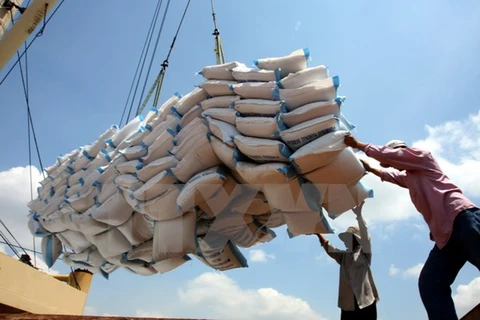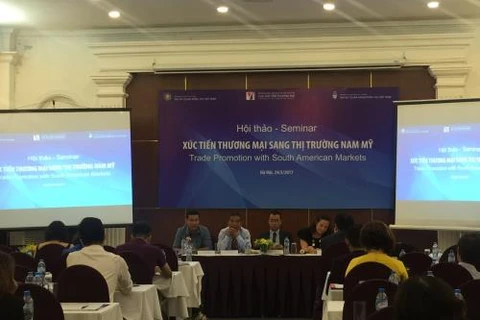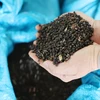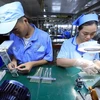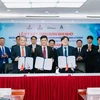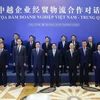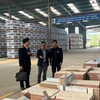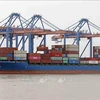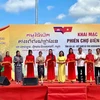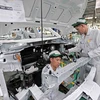Hanoi (VNA) – Despite rapid growth for years, the rice sector of Vietnam is hamstrung by policies that reduce its competitiveness. Amidst this situation, strong actions are needed to broaden markets and increase rice exports.
Analysing global market forecasts, Sergio Araujo from the Trade and Market Division of the UN Food and Agriculture Organisation (FAO) noted that global rice production mostly depended on higher productivity in Asia and Africa, which produced nearly 500 million tonnes in the 2015-2016 crops
Calculations showed that the world needs more than 50 million tonnes of additional rice. It is forecast that inventories in the future will be lower than production and demand, he said at a conference in Hanoi on May 24.
He said that global rice trade will recover in 2025, but instability in policies and currency is likely to continue, adding that all predictions pointed to a slight fall in global rice inventory and declining rice prices. Currently, large rice producers face the problems of salinity and climate change.
Experts also asserted that in Vietnam, small-scale production has led using many rice varieties leads to differences in quality and difficulties in tracking origin.
Mechanisation levels in harvesting remain low, reducing rice export quality and raising post-harvest losses and production costs, they said, adding that current unsuitable processing procedures also affect quality.
Commenting on the prospects for Vietnam’s rice sector in 2017, Pham Thi Kim Dung from the Institute of Policies and Strategy for Agriculture and Rural Development said the average rice price in 2017 may drop 2.7 percent over 2016 before increasing 6 percent in 2018.
Dung said that Vietnam’s rice sector should focus on systemising, especially in trade intermediate and processing processes. Besides boosting exports, should also pay more attention to domestic market.
Along with keeping a close eye on the Chinese market, it is necessary to maintain traditional markets and develop new ones, she added.
Experts at the event also agreed that in the future, the local rice sector will encounter great challenges, requiring it to continue overcoming its weaknesses and design measures to respond to changes in the world rice market, while raising export revenue with high quality rice varieties and promoting trademark building.-VNA
Analysing global market forecasts, Sergio Araujo from the Trade and Market Division of the UN Food and Agriculture Organisation (FAO) noted that global rice production mostly depended on higher productivity in Asia and Africa, which produced nearly 500 million tonnes in the 2015-2016 crops
Calculations showed that the world needs more than 50 million tonnes of additional rice. It is forecast that inventories in the future will be lower than production and demand, he said at a conference in Hanoi on May 24.
He said that global rice trade will recover in 2025, but instability in policies and currency is likely to continue, adding that all predictions pointed to a slight fall in global rice inventory and declining rice prices. Currently, large rice producers face the problems of salinity and climate change.
Experts also asserted that in Vietnam, small-scale production has led using many rice varieties leads to differences in quality and difficulties in tracking origin.
Mechanisation levels in harvesting remain low, reducing rice export quality and raising post-harvest losses and production costs, they said, adding that current unsuitable processing procedures also affect quality.
Commenting on the prospects for Vietnam’s rice sector in 2017, Pham Thi Kim Dung from the Institute of Policies and Strategy for Agriculture and Rural Development said the average rice price in 2017 may drop 2.7 percent over 2016 before increasing 6 percent in 2018.
Dung said that Vietnam’s rice sector should focus on systemising, especially in trade intermediate and processing processes. Besides boosting exports, should also pay more attention to domestic market.
Along with keeping a close eye on the Chinese market, it is necessary to maintain traditional markets and develop new ones, she added.
Experts at the event also agreed that in the future, the local rice sector will encounter great challenges, requiring it to continue overcoming its weaknesses and design measures to respond to changes in the world rice market, while raising export revenue with high quality rice varieties and promoting trademark building.-VNA
VNA

